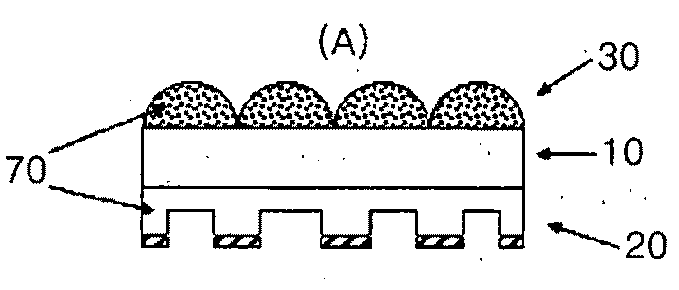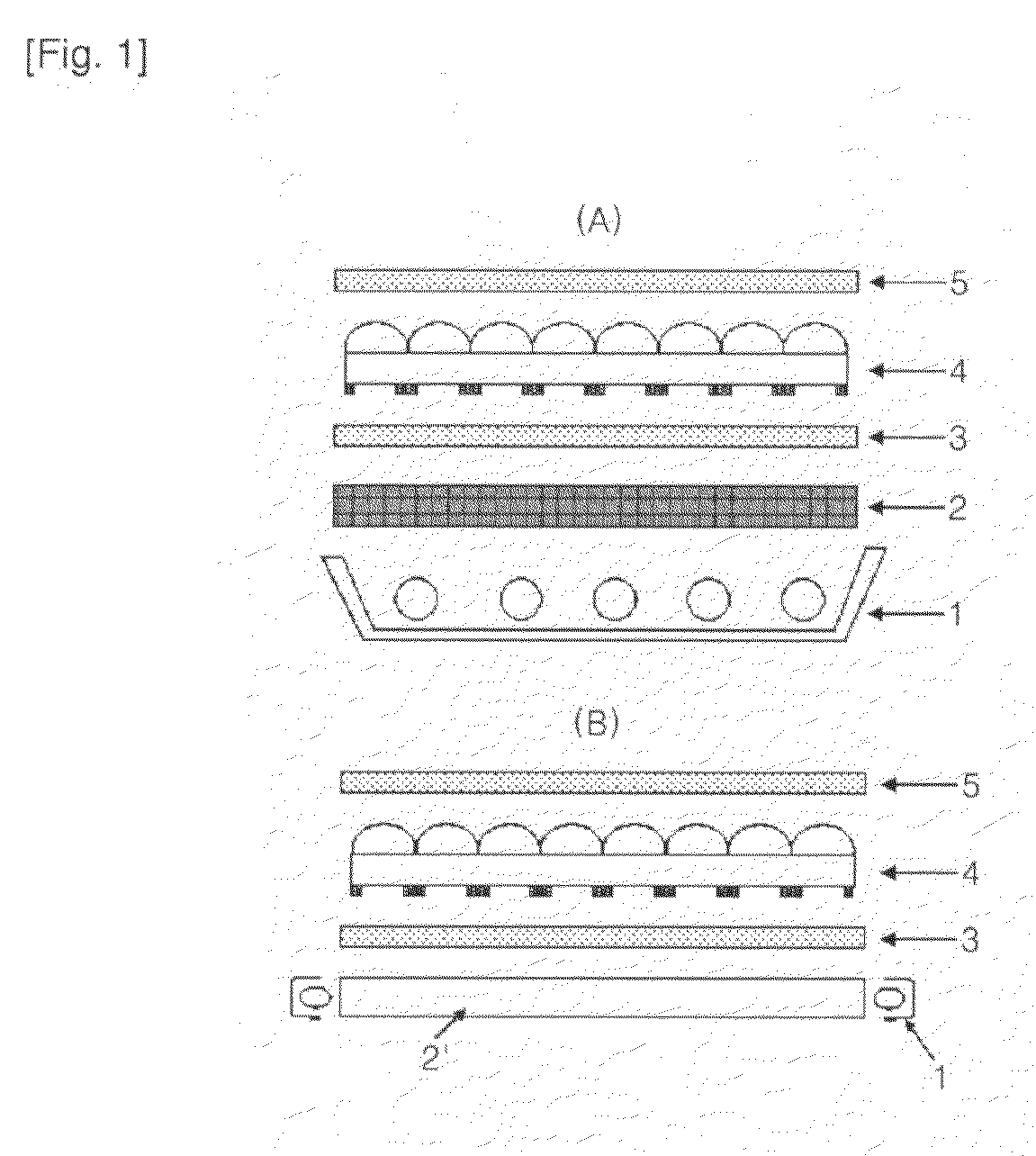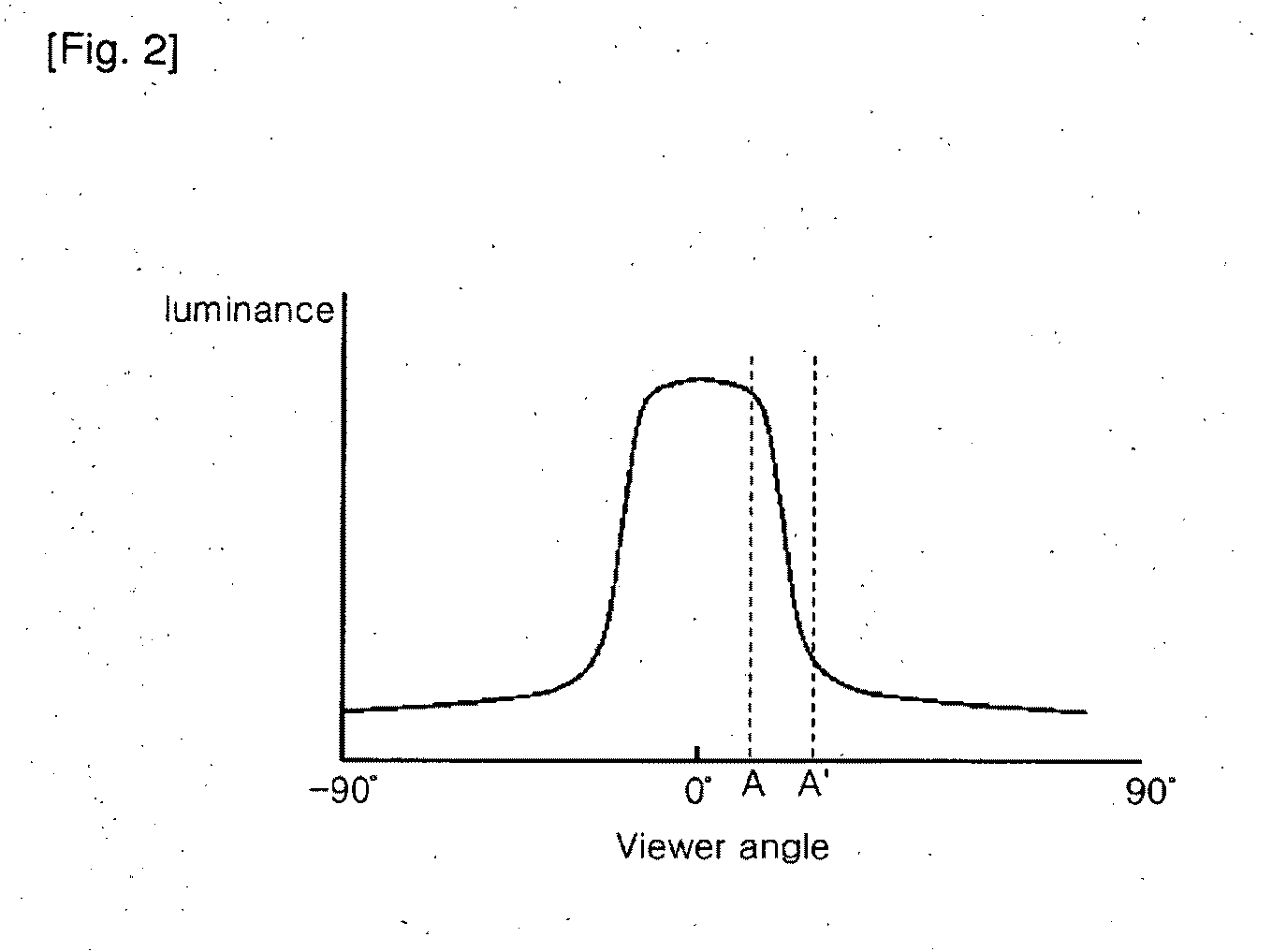Condensing film for LCD backlight unit and LCD backlight unit using the same
- Summary
- Abstract
- Description
- Claims
- Application Information
AI Technical Summary
Benefits of technology
Problems solved by technology
Method used
Image
Examples
example 1
[0043]20 g of a bead-type PMMA polymer (refractive index: 1.49, mean particle diameter: 15 μm (micrometer)) was dispersed in 100 g of a UV-curable resin having a refractive index of about 1.53 to prepare a curable resin solution. A lenticular lens and a light ingoing unit were formed respectively in upper and lower surfaces of a PET film by pouring the curable resin solution between a roller-type mold and a 125 μm (micrometer)-thick PET film and curing the curable resin solution. Then, reflection planes were formed in prominences of the light ingoing unit by coating the prominences with a reflectance ink.
experimental example 1
[0045]Each of the condensing film prepared in the Example 1 and Comparative example 1 was stacked onto an edge-type light guide plate using a BM7 (commercially available from Nikon) provided in a Goniometer, and measured for luminance distribution according to the viewing angle in a vertical direction. The experimental results were plotted in the graph as shown in FIG. 5.
[0046]As shown in FIG. 5, it was revealed that the condensing film of Comparative example 1 shows a sudden reduction in the luminance around a viewing angle of about ±20° (degree) but the condensing film of Example 1 shows a gentle change in the luminance around the viewing angle. Since hot bands appeared by the sudden changed in the luminance as described above, the formation of the hot bands may be reduced by using a condensing film, such as the condensing film of Example 1, that shows the gentle change in the luminance, which makes it possible to display an image with excellent image quality.
PUM
 Login to View More
Login to View More Abstract
Description
Claims
Application Information
 Login to View More
Login to View More - R&D
- Intellectual Property
- Life Sciences
- Materials
- Tech Scout
- Unparalleled Data Quality
- Higher Quality Content
- 60% Fewer Hallucinations
Browse by: Latest US Patents, China's latest patents, Technical Efficacy Thesaurus, Application Domain, Technology Topic, Popular Technical Reports.
© 2025 PatSnap. All rights reserved.Legal|Privacy policy|Modern Slavery Act Transparency Statement|Sitemap|About US| Contact US: help@patsnap.com



